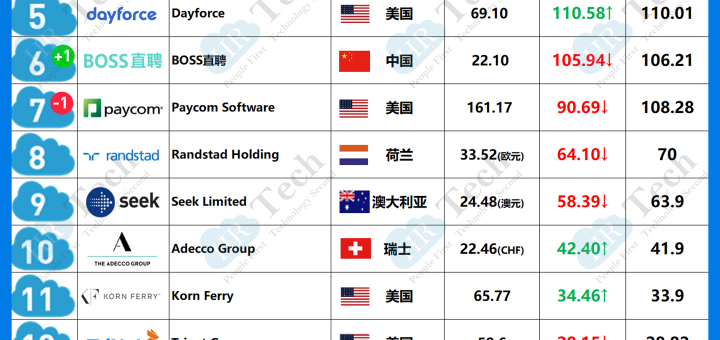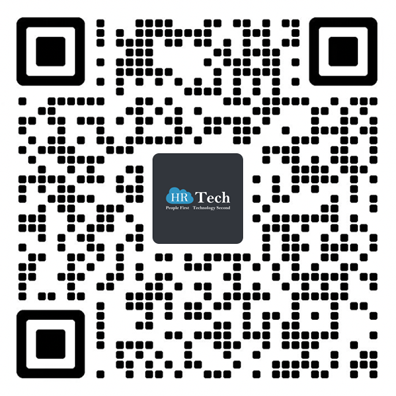-
 algorithm
Josh Bersin:人工智能能战胜人类直觉做决策吗?不可能 多年来,我们一直在争论 AI 是否能用于人类决策,比如:该雇佣谁?该提拔谁?薪酬多少合适?以及数百种其他决策。领导者每天都面临复杂、艰难的抉择——我们能信任 AI 来替我们做决定吗? 我的观点是:不能。 什么是直觉?什么是情绪? 我们都知道所谓“第一类思维”(Type 1 Thinking)——也就是直觉反应——在我们日常生活中扮演着主导角色。比如你见到一个人、坐在一个会议中,突然就知道“该雇谁”或“该怎么做”,即使数据很难查证。 我最近深入研究了遗传学、情绪与直觉,并得出结论:再强大的 AI “超级智能”,也无法替代我们的情绪。而这些情绪,来自我们的成长背景、过往经历,甚至基因组成——往往比数据更具洞察力。 作为一名工程师,我当然推崇数据与科学,因此并不是在否定算法与数据驱动决策。但我在人力资本领域的研究一再证明,是“人类直觉”在补充、辅助,并最终确定那些 AI 给出的建议。 AI 做决策的局限性在哪里? AI 系统依赖“概率神经网络”进行训练,模型会从已有数据中学习,再用来判断新信息——写一段代码、生成一张图、创作一篇文章,它做得确实很出色。这是因为它可以瞬间把所有训练内容当作一个巨大的“数据集”,并用向量计算给出答案。 但这都基于一个假设:数据本身就足够全面,能够包含足够多的观点和洞察。如今,大多数大型 AI 实验室已承认“可索引的数据已经用尽”,所以开始制造“合成数据”——也就是 AI 用已有数据生成新数据,以此来扩充模型。 问题来了:这些数据缺失了什么? 如果你研究情绪理论(至少有六种主流理论),你会发现大多数观点都认为,一个人“对一件事的感觉”源于其生活经历、刺激源(所见所闻所感)以及基因。而“基因”这个维度,则是几百万年人类进化的产物。 所以即使某个商业决策在逻辑上是合理的,但我们每个人对数据的解读都是不同的,而我们的反应也由经验和人性所驱动。这就是为什么在一个高管会议上,大家面对同一组营收与市场数据,却会得出完全不同的结论: 比如一个人说:“我们做得不错,该庆祝!”另一个则说:“为什么没更快增长?我们本可以更好!” 为什么人类决策更有优势? 人类互动千差万别,有人积极进取,有人保守稳重。这种“直觉差异”正是一些公司在市场中脱颖而出的关键。 那这种直觉来自哪里?来自我们几百万年的进化历史与独特的“表观遗传能力”(epigenetic capabilities)。换句话说,人类智能与直觉,源于我们的家族基因、成长经历与历史背景。 以我自己为例:父亲那边是音乐家与科学家,母亲家族是商人。我最终成了一个热爱商业与人力工作的工程师。而因为父母都是企业家,我也成了一个有野心、敢冒险、喜欢挑战的人。 这些人类“能力”,本质上是历史和基因的组合,它们在我们的情感、直觉、性格和智慧中展现出来。 AI 决策能超越人类吗?绝不可能。 很多人用丹尼尔·卡尼曼的书《思考,快与慢》来解释这个问题。书中提出: “快速思维”是直觉, “慢速思维”是分析。 尽管这个划分广受欢迎,但现实更复杂。AI 在“慢速分析”方面确实做得不错,但仍然极其“幼稚”。 比如让 Grok 来解释“杰弗里·爱泼斯坦事件”,它会给出一段生硬的描述,但完全没有触及人类直觉所捕捉到的“这是个肮脏、混乱、令人羞耻的丑闻”。 我想表达的是:无论 AI 如何发展,也无论企业在数据中心上投入多少资金,它都无法复制人类在基因、历史与演化层面累积的智能。 举几个例子你就明白了: 当你开车经过街口,看到一个小孩站在路边,你的本能反应是“她可能会突然冲出来”。 当你在会议中感到“这个决策不对”,你会下意识决定“我们先别急,明天再看看感觉”。 而 AI 呢?它只会基于逻辑推演立即给出一个“答案”。 总结:人类直觉,在AI时代更重要 这种“情绪 + 本能 + 遗传”的判断力,正是人类与众不同的关键所在。 正因如此,我们才会有乔布斯与盖茨的不同,马斯克与奥特曼的差异。我们必须正视并尊重这些“人类智能”的组成部分,它们比以往任何时候都更重要。algorithm2025年07月28日
algorithm
Josh Bersin:人工智能能战胜人类直觉做决策吗?不可能 多年来,我们一直在争论 AI 是否能用于人类决策,比如:该雇佣谁?该提拔谁?薪酬多少合适?以及数百种其他决策。领导者每天都面临复杂、艰难的抉择——我们能信任 AI 来替我们做决定吗? 我的观点是:不能。 什么是直觉?什么是情绪? 我们都知道所谓“第一类思维”(Type 1 Thinking)——也就是直觉反应——在我们日常生活中扮演着主导角色。比如你见到一个人、坐在一个会议中,突然就知道“该雇谁”或“该怎么做”,即使数据很难查证。 我最近深入研究了遗传学、情绪与直觉,并得出结论:再强大的 AI “超级智能”,也无法替代我们的情绪。而这些情绪,来自我们的成长背景、过往经历,甚至基因组成——往往比数据更具洞察力。 作为一名工程师,我当然推崇数据与科学,因此并不是在否定算法与数据驱动决策。但我在人力资本领域的研究一再证明,是“人类直觉”在补充、辅助,并最终确定那些 AI 给出的建议。 AI 做决策的局限性在哪里? AI 系统依赖“概率神经网络”进行训练,模型会从已有数据中学习,再用来判断新信息——写一段代码、生成一张图、创作一篇文章,它做得确实很出色。这是因为它可以瞬间把所有训练内容当作一个巨大的“数据集”,并用向量计算给出答案。 但这都基于一个假设:数据本身就足够全面,能够包含足够多的观点和洞察。如今,大多数大型 AI 实验室已承认“可索引的数据已经用尽”,所以开始制造“合成数据”——也就是 AI 用已有数据生成新数据,以此来扩充模型。 问题来了:这些数据缺失了什么? 如果你研究情绪理论(至少有六种主流理论),你会发现大多数观点都认为,一个人“对一件事的感觉”源于其生活经历、刺激源(所见所闻所感)以及基因。而“基因”这个维度,则是几百万年人类进化的产物。 所以即使某个商业决策在逻辑上是合理的,但我们每个人对数据的解读都是不同的,而我们的反应也由经验和人性所驱动。这就是为什么在一个高管会议上,大家面对同一组营收与市场数据,却会得出完全不同的结论: 比如一个人说:“我们做得不错,该庆祝!”另一个则说:“为什么没更快增长?我们本可以更好!” 为什么人类决策更有优势? 人类互动千差万别,有人积极进取,有人保守稳重。这种“直觉差异”正是一些公司在市场中脱颖而出的关键。 那这种直觉来自哪里?来自我们几百万年的进化历史与独特的“表观遗传能力”(epigenetic capabilities)。换句话说,人类智能与直觉,源于我们的家族基因、成长经历与历史背景。 以我自己为例:父亲那边是音乐家与科学家,母亲家族是商人。我最终成了一个热爱商业与人力工作的工程师。而因为父母都是企业家,我也成了一个有野心、敢冒险、喜欢挑战的人。 这些人类“能力”,本质上是历史和基因的组合,它们在我们的情感、直觉、性格和智慧中展现出来。 AI 决策能超越人类吗?绝不可能。 很多人用丹尼尔·卡尼曼的书《思考,快与慢》来解释这个问题。书中提出: “快速思维”是直觉, “慢速思维”是分析。 尽管这个划分广受欢迎,但现实更复杂。AI 在“慢速分析”方面确实做得不错,但仍然极其“幼稚”。 比如让 Grok 来解释“杰弗里·爱泼斯坦事件”,它会给出一段生硬的描述,但完全没有触及人类直觉所捕捉到的“这是个肮脏、混乱、令人羞耻的丑闻”。 我想表达的是:无论 AI 如何发展,也无论企业在数据中心上投入多少资金,它都无法复制人类在基因、历史与演化层面累积的智能。 举几个例子你就明白了: 当你开车经过街口,看到一个小孩站在路边,你的本能反应是“她可能会突然冲出来”。 当你在会议中感到“这个决策不对”,你会下意识决定“我们先别急,明天再看看感觉”。 而 AI 呢?它只会基于逻辑推演立即给出一个“答案”。 总结:人类直觉,在AI时代更重要 这种“情绪 + 本能 + 遗传”的判断力,正是人类与众不同的关键所在。 正因如此,我们才会有乔布斯与盖茨的不同,马斯克与奥特曼的差异。我们必须正视并尊重这些“人类智能”的组成部分,它们比以往任何时候都更重要。algorithm2025年07月28日 -
 algorithm
AI 人工智能中对HR的常见术语解释,没事可以了解下 在工作环境中准备人工智能对于技术厌恶的招聘团队来说是一个令人望而生畏的。 对于那些探索他们的业务意味着什么,这里有8个基本的解释开始: 算法:算法是在解决问题或计算中应遵循的一组规则。算法需要在招聘过程中生成大量数据,并将其转换为HR可用于候选人选择的信息。在之前的一项研究中,通过算法招聘的候选人比人力资源招聘的人员长15%。算法有助于提高候选人的选择并减少不良招聘的可能性。 人工智能(AI):人工智能(AI)通常被称为“第四次工业革命”,它是一种能够模仿智能人类行为的机器,其中包括做决策和执行基本任务,如解决问题,计划和学习。AI可以自动执行重复和平凡的管理任务,包括整个招聘过程中的筛选和申请人更新。这也是聊天机器人的兴起和视频放映的使用背后的原因。 聊天机器人:聊天机器人的简称,聊天机器人在人才获取方面越来越多。与苹果的Siri或亚马逊的Alexa一样,招聘中的聊天机器人使用人工智能(例如,机器学习 - 见下文)来理解问题并作出回应。Chatbots可以在不同的平台上使用,包括电子邮件,消息应用程序和通过您的申请人跟踪软件。Chatbots旨在模拟与您就业网站的访问者的对话,并正在迅速成为高容量招聘的基本技术工具。聊天机器人有效地使用,为您的招聘过程添加更吸引人的互动元素。今年早些时候进行的一项调查发现,在申请过程中,超过一半的候选人愿意与聊天机器人进行互动。 游戏化:游戏化将游戏的常见元素应用于其他在线活动领域,包括市场营销。在招聘过程中,毕业生雇主经常使用劳埃德银行集团,德勤和普华永道倍受青睐的Multipoly,以吸引年轻人才,创造更具吸引力的候选人经验。通过人力资源技术将游戏化融入您的招聘流程中。 机器学习:类似于人工智能,机器学习为AI提供了更智能的算法。在招聘中,机器学习可以减少您的聘用时间,并用于自动化候选人筛选,通常利用招聘分析中与最成功的人员相关的数据。人力资源软件中复杂的机器学习算法可用于通过语言选择甚至面部表情来评估候选人的潜在文化适应性。 人员分析:人员分析将数据和分析结合起来,深入了解与员工相关的一系列问题,包括领导力,绩效管理和招聘。要了解更多信息,请参阅我们以前的文章,其中提供了有关人员分析的更详细的介绍。 情绪分析:这可能不是你熟悉的词,但情绪分析解释了语言对人的影响,无论是消极的,积极的还是中立的。在招聘时可以用来分析你的工作岗位的措辞的影响。例如,去年我们报道说,在社交媒体平台Buffer的“工作岗位”中用'开发者'取代'黑客'这个词,看到女性候选人申请空缺的人数有所增加。在招聘软件中的人力资源分析提供了更多的洞察力,如何使用特定的话可以阻止人才适用于您的工作。使用情感分析的软件也可以提出更合适的词汇来吸引更多元化的人才库。 图灵测试:图灵测试是由科学家阿兰·图灵(Alan Turing)在1950年设想的,前提是“机器可以想象?今天,它指的是人工智能的潜力,以说服人们,而不是一个机器与人互动。其中最成功的例子是第三次获得2017年Loebner奖(基于图灵测试)的Mitsuku聊天机器人,但尚未说服评委是人类。 随着工作场所的自动化程度的提高,这是一个与AI有关的术语。 以上由AI 自动翻译。 Algorithms : An algorithm is a set of rules to be followed in a problem solving situation or calculation. Algorithms take large amounts of data generated during the hiring process and transform it into information that HR can use in candidate selection. In a previous study, candidates recruited via algorithms remained in their job 15% longer than those hired by HR. Algorithms help to improve candidate selection and reduce the potential for a bad hire. Artificial Intelligence (AI) : Often referred to as the ‘fourth industrial revolution’, artificial intelligence (AI) is a machine that is capable of imitating intelligent human behaviour, which includes making decisions and performing basic tasks such as problem solving, planning and learning. AI automates repetitive and mundane admin tasks, including screening and applicant updates throughout the hiring process. It is also behind the rise in chatbots and the use of video screening. Chatbots : Short for chat robot, chatbots are becoming more prolific in talent acquisition. Like Apple’s Siri or Amazon’s Alexa, chatbots in recruitment use artificial intelligence (eg, machine learning - see below) to comprehend questions and respond. Chatbots can be used across different platforms, including e-mail, messaging apps and through your applicant tracking software. Chatbots are designed to simulate conversations with visitors to your careers site and are rapidly becoming an essential tech tool for high volume recruitment. Used effectively, chatbots add a more engaging and interactive element to your hiring process. A survey carried out earlier this year found that over half of candidates are comfortable interacting with chatbots during the application process.[1] Gamification : Gamification applies the common elements of game playing to other areas of online activity, including marketing. In recruitment it is frequently used by graduate employers, including Lloyds Banking Group, Deloitte and in PwC’s popular Multipoly to attract young talent and create a more engaging candidate experience. Incorporate gamification into your recruitment process through your HR technology. Machine learning : Similar to artificial intelligence, machine learning provides AI with the algorithms that make it more intelligent. In hiring, machine learning can reduce your time to hire and is used to automate candidate screening, often utilising the data available in your recruitment analytics relating to your most successful hires. Sophisticated machine learning algorithms in HR software can be used to evaluate the potential cultural fit of a candidate through language choice and even facial expressions. People analytics : People analytics combines data and analysis to gain insight into a range of issues related to your employees, including leadership, performance management and recruitment. For more insight, please see our previous article which provides a more detailed introduction to people analytics. Sentiment analysis : It may not be a term you are familiar with but sentiment analysis interprets the effect that language has on people, whether negative, positive or neutral. In recruitment it can be used to analyse the impact of the wording of your job posts. For example, last we year we reported that by replacing the word ‘hacker’ with ‘developer’ in their job posts, social media platform Buffer saw an increase in the number of female candidates applying to their vacancies. HR analytics in your recruitment software provide more insight into how the use of specific words can deter talent from apply to your jobs. Software which uses sentiment analysis can also suggest more suitable words to attract a more diverse talent pool. The Turing Test : The Turing Test was conceived by scientist Alan Turing in 1950 based on the premise 'can machines think?' Today it refers to the potential for artificial intelligence to convince people they are interacting with a person rather than a machine. One of the most successful examples is the Mitsuku chatbot which has been awarded the 2017 Loebner Prize[2] (based on the Turing Test) for the third time but has yet to convince the judges it is human. It's a term you may hear more of in relation to AI as automation in the workplace rises.algorithm2018年02月12日
algorithm
AI 人工智能中对HR的常见术语解释,没事可以了解下 在工作环境中准备人工智能对于技术厌恶的招聘团队来说是一个令人望而生畏的。 对于那些探索他们的业务意味着什么,这里有8个基本的解释开始: 算法:算法是在解决问题或计算中应遵循的一组规则。算法需要在招聘过程中生成大量数据,并将其转换为HR可用于候选人选择的信息。在之前的一项研究中,通过算法招聘的候选人比人力资源招聘的人员长15%。算法有助于提高候选人的选择并减少不良招聘的可能性。 人工智能(AI):人工智能(AI)通常被称为“第四次工业革命”,它是一种能够模仿智能人类行为的机器,其中包括做决策和执行基本任务,如解决问题,计划和学习。AI可以自动执行重复和平凡的管理任务,包括整个招聘过程中的筛选和申请人更新。这也是聊天机器人的兴起和视频放映的使用背后的原因。 聊天机器人:聊天机器人的简称,聊天机器人在人才获取方面越来越多。与苹果的Siri或亚马逊的Alexa一样,招聘中的聊天机器人使用人工智能(例如,机器学习 - 见下文)来理解问题并作出回应。Chatbots可以在不同的平台上使用,包括电子邮件,消息应用程序和通过您的申请人跟踪软件。Chatbots旨在模拟与您就业网站的访问者的对话,并正在迅速成为高容量招聘的基本技术工具。聊天机器人有效地使用,为您的招聘过程添加更吸引人的互动元素。今年早些时候进行的一项调查发现,在申请过程中,超过一半的候选人愿意与聊天机器人进行互动。 游戏化:游戏化将游戏的常见元素应用于其他在线活动领域,包括市场营销。在招聘过程中,毕业生雇主经常使用劳埃德银行集团,德勤和普华永道倍受青睐的Multipoly,以吸引年轻人才,创造更具吸引力的候选人经验。通过人力资源技术将游戏化融入您的招聘流程中。 机器学习:类似于人工智能,机器学习为AI提供了更智能的算法。在招聘中,机器学习可以减少您的聘用时间,并用于自动化候选人筛选,通常利用招聘分析中与最成功的人员相关的数据。人力资源软件中复杂的机器学习算法可用于通过语言选择甚至面部表情来评估候选人的潜在文化适应性。 人员分析:人员分析将数据和分析结合起来,深入了解与员工相关的一系列问题,包括领导力,绩效管理和招聘。要了解更多信息,请参阅我们以前的文章,其中提供了有关人员分析的更详细的介绍。 情绪分析:这可能不是你熟悉的词,但情绪分析解释了语言对人的影响,无论是消极的,积极的还是中立的。在招聘时可以用来分析你的工作岗位的措辞的影响。例如,去年我们报道说,在社交媒体平台Buffer的“工作岗位”中用'开发者'取代'黑客'这个词,看到女性候选人申请空缺的人数有所增加。在招聘软件中的人力资源分析提供了更多的洞察力,如何使用特定的话可以阻止人才适用于您的工作。使用情感分析的软件也可以提出更合适的词汇来吸引更多元化的人才库。 图灵测试:图灵测试是由科学家阿兰·图灵(Alan Turing)在1950年设想的,前提是“机器可以想象?今天,它指的是人工智能的潜力,以说服人们,而不是一个机器与人互动。其中最成功的例子是第三次获得2017年Loebner奖(基于图灵测试)的Mitsuku聊天机器人,但尚未说服评委是人类。 随着工作场所的自动化程度的提高,这是一个与AI有关的术语。 以上由AI 自动翻译。 Algorithms : An algorithm is a set of rules to be followed in a problem solving situation or calculation. Algorithms take large amounts of data generated during the hiring process and transform it into information that HR can use in candidate selection. In a previous study, candidates recruited via algorithms remained in their job 15% longer than those hired by HR. Algorithms help to improve candidate selection and reduce the potential for a bad hire. Artificial Intelligence (AI) : Often referred to as the ‘fourth industrial revolution’, artificial intelligence (AI) is a machine that is capable of imitating intelligent human behaviour, which includes making decisions and performing basic tasks such as problem solving, planning and learning. AI automates repetitive and mundane admin tasks, including screening and applicant updates throughout the hiring process. It is also behind the rise in chatbots and the use of video screening. Chatbots : Short for chat robot, chatbots are becoming more prolific in talent acquisition. Like Apple’s Siri or Amazon’s Alexa, chatbots in recruitment use artificial intelligence (eg, machine learning - see below) to comprehend questions and respond. Chatbots can be used across different platforms, including e-mail, messaging apps and through your applicant tracking software. Chatbots are designed to simulate conversations with visitors to your careers site and are rapidly becoming an essential tech tool for high volume recruitment. Used effectively, chatbots add a more engaging and interactive element to your hiring process. A survey carried out earlier this year found that over half of candidates are comfortable interacting with chatbots during the application process.[1] Gamification : Gamification applies the common elements of game playing to other areas of online activity, including marketing. In recruitment it is frequently used by graduate employers, including Lloyds Banking Group, Deloitte and in PwC’s popular Multipoly to attract young talent and create a more engaging candidate experience. Incorporate gamification into your recruitment process through your HR technology. Machine learning : Similar to artificial intelligence, machine learning provides AI with the algorithms that make it more intelligent. In hiring, machine learning can reduce your time to hire and is used to automate candidate screening, often utilising the data available in your recruitment analytics relating to your most successful hires. Sophisticated machine learning algorithms in HR software can be used to evaluate the potential cultural fit of a candidate through language choice and even facial expressions. People analytics : People analytics combines data and analysis to gain insight into a range of issues related to your employees, including leadership, performance management and recruitment. For more insight, please see our previous article which provides a more detailed introduction to people analytics. Sentiment analysis : It may not be a term you are familiar with but sentiment analysis interprets the effect that language has on people, whether negative, positive or neutral. In recruitment it can be used to analyse the impact of the wording of your job posts. For example, last we year we reported that by replacing the word ‘hacker’ with ‘developer’ in their job posts, social media platform Buffer saw an increase in the number of female candidates applying to their vacancies. HR analytics in your recruitment software provide more insight into how the use of specific words can deter talent from apply to your jobs. Software which uses sentiment analysis can also suggest more suitable words to attract a more diverse talent pool. The Turing Test : The Turing Test was conceived by scientist Alan Turing in 1950 based on the premise 'can machines think?' Today it refers to the potential for artificial intelligence to convince people they are interacting with a person rather than a machine. One of the most successful examples is the Mitsuku chatbot which has been awarded the 2017 Loebner Prize[2] (based on the Turing Test) for the third time but has yet to convince the judges it is human. It's a term you may hear more of in relation to AI as automation in the workplace rises.algorithm2018年02月12日
最近文章
-
 【美国】医疗保险服务提供商Curative获得1.5亿美元B轮融资,以重新定义健康保险的未来 2025年12月03日
【美国】医疗保险服务提供商Curative获得1.5亿美元B轮融资,以重新定义健康保险的未来 2025年12月03日 -
 【纽约】初创的AI面试公司 lizzyAI 完成 500 万美元种子轮融资 2025年12月03日
【纽约】初创的AI面试公司 lizzyAI 完成 500 万美元种子轮融资 2025年12月03日 -

-
 AI评绩效:比人类更公正? 2025年12月02日
AI评绩效:比人类更公正? 2025年12月02日 -
 AI招聘的四大真相:为何真正的颠覆与你想象的截然相反 2025年12月02日
AI招聘的四大真相:为何真正的颠覆与你想象的截然相反 2025年12月02日
热门文章
那年今日
- 在线教育行业“大众点评”多学,获500万元天使投资 2014年12月16日
- 保险极客完成5000万元A+轮融资,清控银杏领投,联想之星、启迪之星创投跟投 2016年12月16日
- 构建高效的员工体验战略指南 2020年12月16日
- 企业沟通协作工具 Slack 获得8000 万美元融资用于的应用开发基金 2015年12月16日
- 【资讯】GoGlobal 分享2023年远程工作预测,混合工作及跨境招聘将使公司在2023年的人才竞争中占据一席之地 2022年12月16日
 扫一扫 加微信
hrtechchina
扫一扫 加微信
hrtechchina

